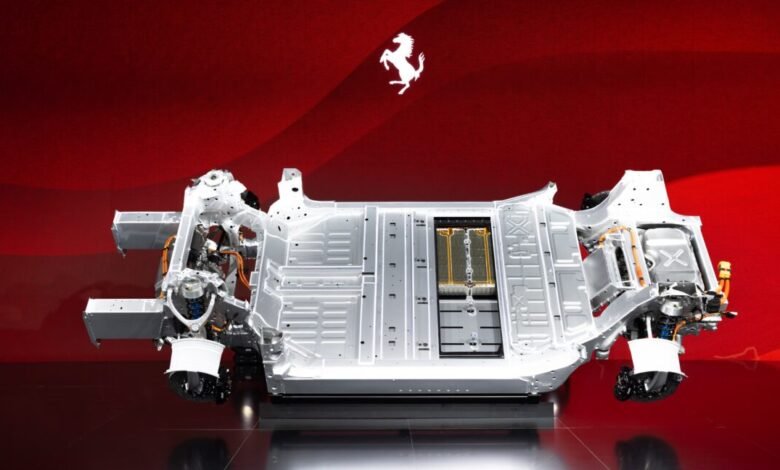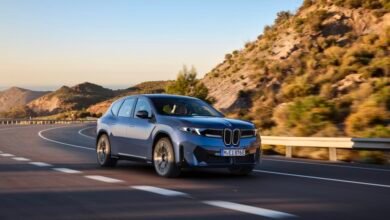Ferrari’s First Electric Car: Everything We Know

▼ Summary
– Ferrari’s new E-Building is a flexible, LEED-certified factory capable of assembling any model, including the upcoming first electric vehicle.
– The Ferrari Elettrica will be a four-seater, as the battery pack lowers the center of gravity and reduces polar moment of inertia compared to combustion engines.
– The electric vehicle features a 116.5-inch wheelbase with short overhangs and uses 75% recycled aluminum, saving 6.7 tons of CO2 per car.
– Ferrari’s electric powertrain development is influenced by Formula 1 hybrid systems, including magnet arrangements and thermal management techniques.
– The company has not yet revealed the Elettrica’s interior or exterior, with full details expected to be released next year.
The automotive world is buzzing with anticipation for Ferrari’s first electric vehicle, set to begin production next year at the brand’s state-of-the-art Maranello facility. This landmark model, currently referred to as the Ferrari Elettrica, will be assembled in the newly constructed E-Building, a flexible and environmentally conscious factory space designed to handle any model in the lineup. As one of Italy’s pioneering LEED-certified structures, the facility underscores Ferrari’s commitment to a sustainable manufacturing process for its long-awaited entry into the fully electric market.
Ferrari is deliberately taking its time with this pivotal project. While the company has shared initial technical details regarding the powertrain and chassis, the complete design, both interior and exterior, remains under wraps until its official debut next year. The development process involved careful consideration of different body styles. Engineers evaluated an all-electric two-seater and even a model with occasional rear seats, but concluded that the performance advantages of an electric powertrain could not sufficiently counteract the added weight in those configurations.
The calculations proved favorable for a four-seater layout. In this application, the substantial battery pack actually enhances the car’s dynamics by lowering the center of gravity by 3.1 inches (80 mm) compared to a traditional internal combustion engine setup. This significant drop, combined with a 20 percent reduction in the polar moment of inertia, promises exceptional agility and stability. Despite its four-seat capacity, the Elettrica is not envisioned as an overly large vehicle. Its wheelbase measures 116.5 inches (2,960 mm), which is slightly shorter than a Hyundai Ioniq 5. Ferrari also highlights that the design incorporates very short front and rear overhangs for a compact footprint. Emphasizing its eco-friendly approach, the company is using 75 percent recycled aluminum for the chassis and body panels, a move that saves an estimated 6.7 tons of CO2 per vehicle.
The electric powertrain benefits directly from Ferrari’s extensive experience in Formula 1, where hybrid systems have been integral since 2009. While the electric motors are not direct copies of their F1 counterparts, the racing DNA is clearly present. A key example is the use of a Hallbach arrangement for the rotor magnets. This sophisticated configuration acts like a special code for magnetic orientation, concentrating the magnetic field powerfully onto the stator for greater efficiency. Further enhancing performance and reliability, a thin carbon sleeve securely contains the magnets within the rotor. Meanwhile, the stator windings are embedded in a vacuum-impregnated resin, a material chosen for its superior thermal conductivity compared to air, ensuring the powertrain remains cool under extreme demands.
(Source: Ars Technica)



